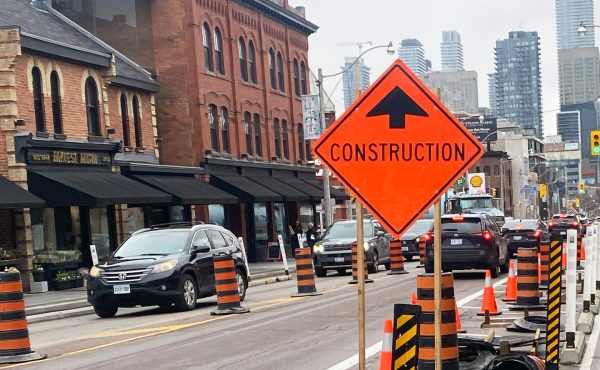
From the Toronto Star today:
Today, an old cement block warehouse will come tumbling down on King St., east of Toronto’s downtown.
The demolition of 15 other derelict buildings and dead factories between Parliament St. and the Don River will follow.But this isn’t the end of a neighbourhood, it’s the beginning. From the rubble of this industrial wasteland the new West Don Lands community will rise.There will be 5,800 new homes, an elementary school, a recreation centre and parks — all within a five-minute walk of a new public transit line. “This is an area that has been abandoned and left behind for a long time. I think people are really going to enjoy having a community there and a beautiful park,” said Cynthia Wilkey, who lives just north of the area and has long been involved in redevelopment plans.
Read all of it here.




6 comments
Too bad about the parkland – if there’s one thing Toronto doesn’t need, it’s more parks.
Toronto does have many parks. I don’t know if I buy “too many,” but certainly there’s room for more (especially in an area as large as the West Donlands. I think the biggest problem with regards to parks in this city is that not much thought goes into most of them. People just say “give us more parks” yet then don’t play a role in what they want to see in their park nor do they often use it eight months out of the year. Therefore, we often get some grass, a few tress, maybe a bench and a couple dog walkers.
Too many parks. Too many puppies. Too much sunshine. Too many beaches. Too many nice people.
True, all too often not much thought seems to go into new parks. The gezebo at Woodbine Park is a great example.
Another problem, the one that makes me think Toronto has too much parkland, is monster parks. We have ravines and beaches and high park and whatever Downsview is supposed to be – Toronto has enough large open green spaces.
The parkland in the waterfront seems to move in the monster park direction. Such spaces, more often than not, suck the life out of the surrounding city. (Again, see Woodbine Park.)
Much needed density, on the other hand, does the exact opposite.
I’ve certainly noticed that life-sucking effect from the surrounding city around Central Park, Boston Common, Stanley Park, and Hyde Park. Who could not notice the lack of vitality and people in the parts of New York, Boston, Vancouver and London near their magnificent large parks?
I can only speak for Central Park, and you’re right, it is humming with activity. However, Toronto will never have the density that sourrounds Central Park. Moreover, there is only one Central Park. Toronto, on the other hand, has many very large parks. What Toronto does not have is much by way of density.
In my experience with parks in Toronto, when you place a huge green space in an area with little density, you get a dead zone. Perhaps the problem is more about density, but the combination of low density and big park is a recipe for, well, the suburbs.